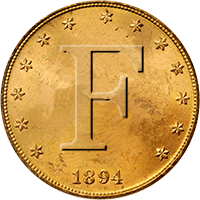I have some dimes in my test garden that are beneath junk, mostly nails and I can hit more of them with my concentric coils that with the DD's. I have always used DD's but am starting to play with the concentric coils. NASA Tom gave the following explanation for why this could happen.
Let's say a coin is buried at 7". And let's say that a very small piece/sliver of nail is 4" deep.......and directly above the coin. ((( This would be 3" above the coin ))). ,,,,,,,,,,,, It would be common that a very tight footprint DD coil would place MORE FOCUSED energy on the 4" deep sliver that is directly above the coin........and possibly miss the coin; ................. whereas........... a concentric coil....of which does NOT have 'focused' energy............would place less energy on the 4" deep sliver.......and poses a wider angle-of-attack envelope footprint; subsequently lending a better chance of detection of the coin.
For you experienced guys, would there ever be a location where you would choose a concentric over a DD and what would the reason be?? Thanks for any help. Randy
Let's say a coin is buried at 7". And let's say that a very small piece/sliver of nail is 4" deep.......and directly above the coin. ((( This would be 3" above the coin ))). ,,,,,,,,,,,, It would be common that a very tight footprint DD coil would place MORE FOCUSED energy on the 4" deep sliver that is directly above the coin........and possibly miss the coin; ................. whereas........... a concentric coil....of which does NOT have 'focused' energy............would place less energy on the 4" deep sliver.......and poses a wider angle-of-attack envelope footprint; subsequently lending a better chance of detection of the coin.
For you experienced guys, would there ever be a location where you would choose a concentric over a DD and what would the reason be?? Thanks for any help. Randy

